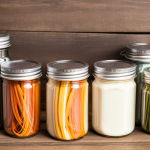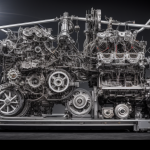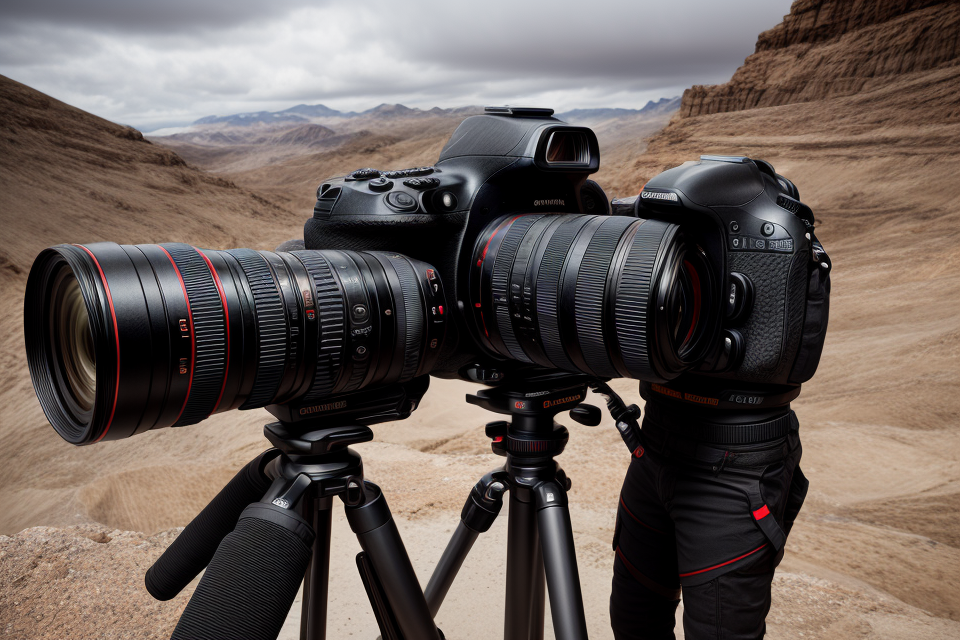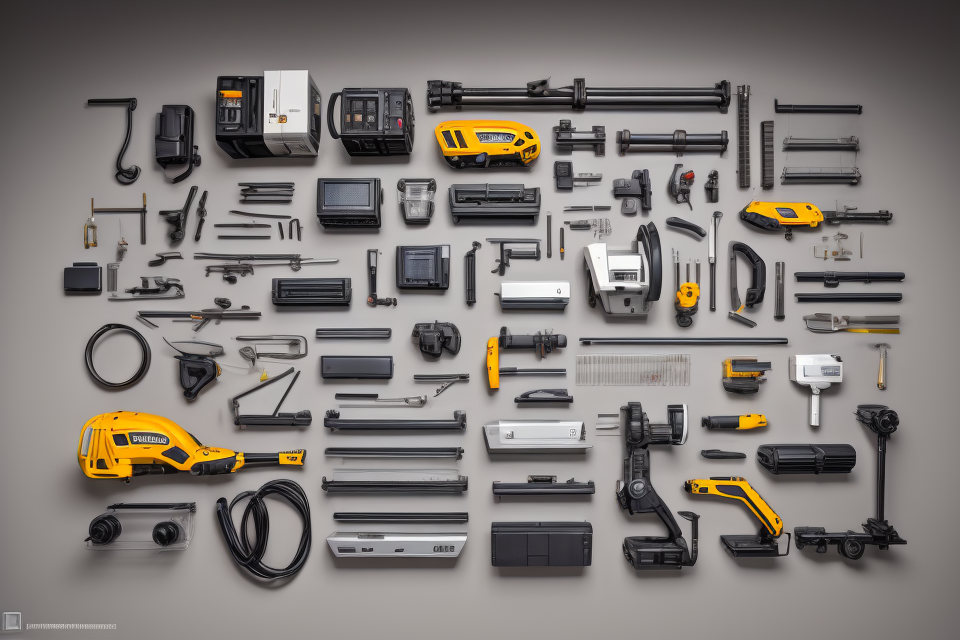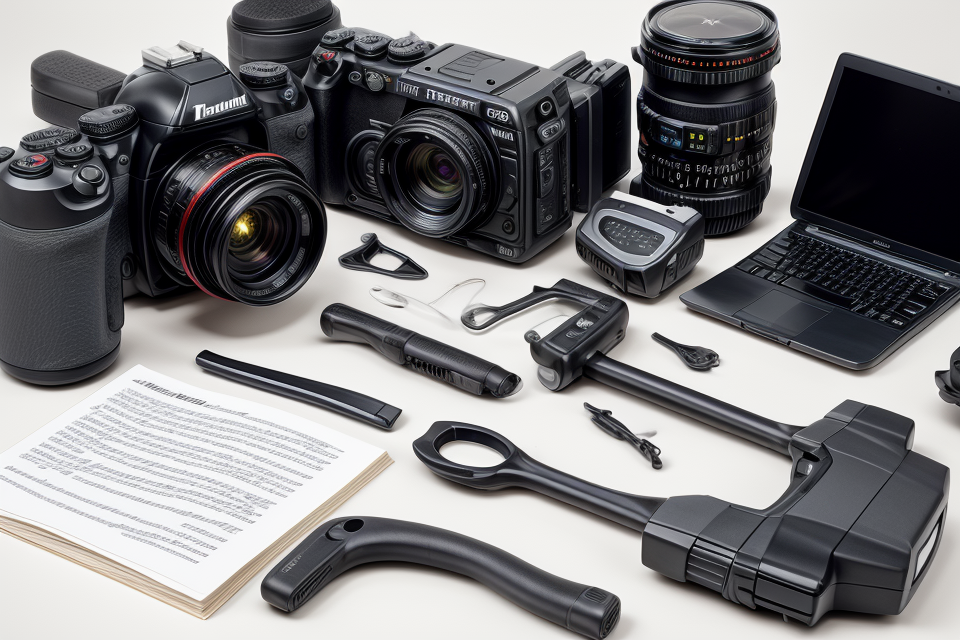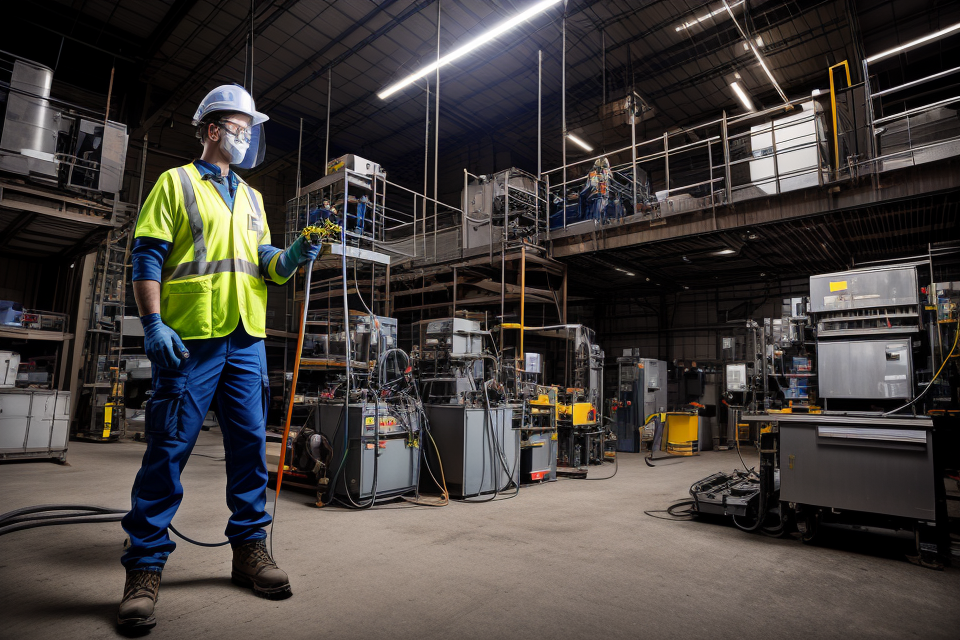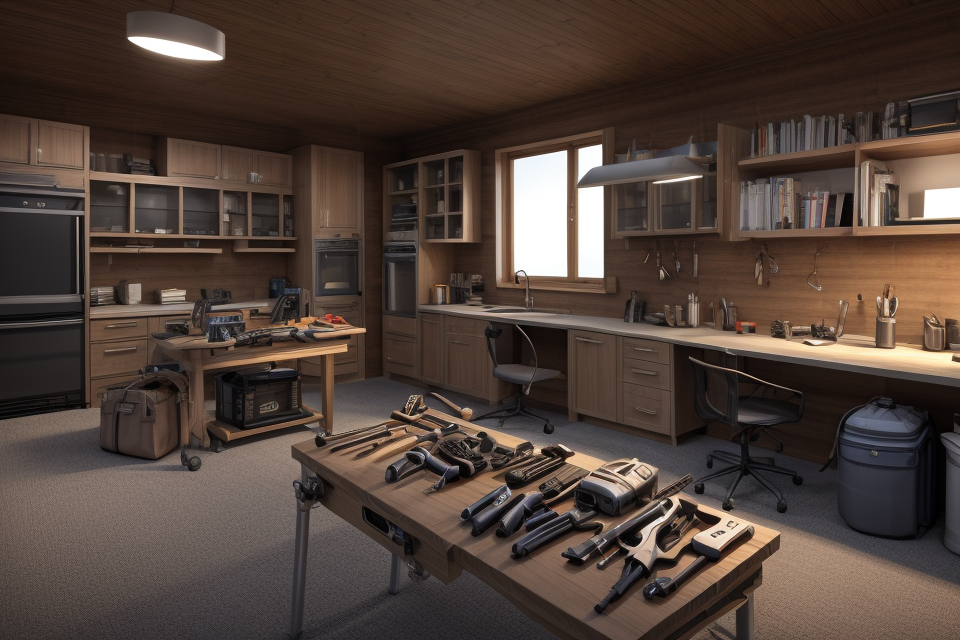Photography is an art form that requires not just creativity, but also the right tools to bring your vision to life. To capture stunning images, you need to have the right gear that can help you control various aspects of your shots, from lighting to focus and more. But with so many options available in the market, it can be overwhelming to decide what gear to invest in. This article will guide you through the essential photography gear that can help you achieve great shots, no matter your skill level or budget. From cameras to lenses, tripods to filters, we’ll cover everything you need to know to master the art of photography.
Understanding Your Photography Goals
Determining Your Photography Style
As you embark on your photography journey, it’s crucial to understand your goals and define your personal style. Your photography style is a unique blend of techniques, composition, and subject matter that reflects your creative vision and individuality. To determine your photography style, consider the following factors:
- Genres:
- Landscape: Capturing the beauty of nature, often emphasizing vast expanses, dramatic skies, and majestic scenery.
- Portrait: Focusing on the human face and form, highlighting emotions, character, and personality.
- Street: Documenting everyday life, capturing candid moments, and exploring urban environments.
- Still Life: Creating compositions with inanimate objects, emphasizing form, texture, and light.
- Documentary: Recording real-life events, people, and situations, with an emphasis on storytelling and social commentary.
- Techniques:
- Black and White: Converting images to monochrome, emphasizing form, texture, and contrast.
- Color: Utilizing the full spectrum of colors to convey mood, atmosphere, and emotions.
- Macro: Capturing small details, often with a magnifying lens, showcasing intricate textures and patterns.
- Long Exposure: Capturing extended periods of time, creating motion blur or emphasizing movement.
- High Dynamic Range (HDR): Merging multiple exposures to create images with increased dynamic range and detail in challenging lighting conditions.
- Composition:
- Rule of Thirds: Placing subjects or key elements at the intersection of imaginary gridlines for a visually pleasing arrangement.
- Leading Lines: Utilizing lines in the scene to guide the viewer’s eye and create a sense of depth and movement.
- Symmetry: Finding and capturing balanced, mirror-like compositions to create a sense of order and harmony.
- Framing: Using environmental elements, such as windows, doors, or archways, to frame your subject.
- Depth of Field: Controlling the area in focus, creating a shallow or deep depth of field to emphasize or isolate subjects.
- Equipment:
- Cameras: DSLR, mirrorless, or film cameras, each offering unique features and capabilities.
- Lenses: Wide-angle, telephoto, macro, or zoom lenses, suitable for various genres and shooting styles.
- Tripods: Stable support for long exposures, low light, or panoramic shots.
- Accessories: Filters, straps, memory cards, batteries, and carrying cases to complement your gear.
By understanding your photography goals and determining your personal style, you can make informed decisions about the gear that will best support your creative vision. Remember, the right equipment will help you achieve your desired results, but it’s ultimately your vision, creativity, and technical skills that will elevate your photography to new heights.
Identifying Your Needs and Limitations
As you embark on your photography journey, it is crucial to assess your specific needs and limitations. This introspection will enable you to make informed decisions about the gear you require, ultimately helping you achieve your desired outcomes. Here are some factors to consider when identifying your needs and limitations:
1. Photography Genre and Style
Your preferred genre and style of photography will influence the gear you need. For instance, if you specialize in landscape photography, you will require a tripod and a wide-angle lens, while a macro lens and flash may be more suitable for close-up and product photography. Understanding your niche will guide you in selecting the appropriate equipment.
2. Budget
Your budget plays a significant role in determining the gear you can afford. While some photographers may have unlimited financial resources, others need to be more cautious in their investments. Identifying your budget constraints will help you prioritize your expenses and make cost-effective choices.
3. Experience and Skill Level
Your experience and skill level in photography also influence the gear you require. Novice photographers may need more basic equipment, such as a DSLR or mirrorless camera and a standard kit lens, while more experienced photographers may require advanced gear like high-end lenses, lighting equipment, or specialized accessories.
4. Compatibility and Upgradability
Consider the compatibility of your current equipment with potential upgrades. For instance, if you own a DSLR camera, you may want to invest in lenses that are compatible with full-frame or cropped sensors. Additionally, research the upgradability of your gear, such as the lens mount, to ensure that your investments are not limited in the future.
5. Physical Limitations and Comfort
Your physical limitations and personal comfort should also be taken into account. If you have any physical impairments or preferences, such as color blindness or the need for ergonomic handles, make sure to choose gear that accommodates these factors. Moreover, ensure that your equipment is comfortable to use during extended periods, as this will significantly impact your overall experience and output.
By carefully assessing these factors, you can effectively identify your needs and limitations, allowing you to make informed decisions about the gear you require for achieving great shots in your photography pursuits.
Creating a Budget
When it comes to building a photography kit, one of the most important things to consider is your budget. It’s easy to get caught up in the excitement of buying new gear, but it’s important to remember that not every piece of equipment is necessary for achieving great shots. By creating a budget, you can prioritize the gear that will have the biggest impact on your photography and avoid overspending on unnecessary items.
To create a budget, start by evaluating your photography goals. Are you looking to take portraits, landscapes, or action shots? Different types of photography require different types of equipment, so it’s important to be clear about what you want to achieve. Once you have a clear idea of your goals, you can start to research the gear that will best help you achieve them.
Next, consider the cost of each piece of equipment. Some gear, like lenses and cameras, can be quite expensive, while others, like tripods and filters, are more affordable. It’s important to set a realistic budget and stick to it, so you don’t end up spending more than you can afford.
Finally, remember that there are many ways to achieve great shots without breaking the bank. While some gear can be a game-changer, other equipment is simply a luxury. By prioritizing the gear that will have the biggest impact on your photography and being mindful of your budget, you can build a kit that will help you achieve your photography goals without breaking the bank.
Choosing the Right Camera
To achieve great shots in photography, it is important to understand your goals and personal style, as well as identify your needs and limitations. This will help you make informed decisions about the gear that will best support your creative vision. Assess factors such as your preferred photography genre and style, budget, experience and skill level, compatibility and upgradability, and physical limitations and comfort. Creating a budget can help you prioritize the gear that will have the biggest impact on your photography without overspending on unnecessary items. Choosing the right camera, lenses, and accessories can greatly enhance your photography experience and help you capture stunning images.
DSLR vs Mirrorless Cameras
When it comes to choosing the right camera for your photography needs, there are two main types to consider: DSLR (Digital Single-Lens Reflex) and mirrorless cameras. Both have their own unique features and benefits, so it’s important to understand the differences between them before making a decision.
DSLR cameras have been around for a while and are known for their versatility and high image quality. They work by using a mirror to reflect light from the lens to an optical viewfinder, allowing the photographer to see exactly what they’re capturing. When the photographer presses the shutter button, the mirror flips up, allowing light to hit the image sensor and capture the image.
One of the main advantages of DSLR cameras is their excellent image quality, especially when it comes to low-light situations. They also tend to have better autofocus systems and more physical controls, making it easier for photographers to adjust settings manually. Additionally, many DSLRs have a wider selection of lenses available, which can be a big plus for professional photographers or those who want to experiment with different focal lengths.
On the other hand, mirrorless cameras are a more recent development and have gained popularity in recent years. Unlike DSLRs, mirrorless cameras don’t have a mirror or an optical viewfinder. Instead, they use an electronic viewfinder or the rear LCD screen to preview the image. Light from the lens is directly hits the image sensor, which then sends the image to the camera’s display.
One of the main advantages of mirrorless cameras is their smaller size and weight. They are typically more compact and lightweight than DSLRs, making them a great option for travel or everyday use. They also tend to have better video capabilities and faster autofocus systems, which can be beneficial for action photography or videography. Additionally, many mirrorless cameras have in-body image stabilization, which can help to reduce camera shake and improve image quality.
Ultimately, the choice between a DSLR and a mirrorless camera will depend on your specific needs and preferences. If you value image quality and manual controls, a DSLR may be the best option for you. However, if you’re looking for a more compact and lightweight camera with advanced video capabilities, a mirrorless camera may be the way to go. Regardless of which type of camera you choose, with the right lenses and accessories, you can achieve great shots and improve your photography skills.
Entry-Level vs Advanced Cameras
When it comes to choosing a camera, one of the first decisions you’ll need to make is whether to opt for an entry-level or advanced camera. Both types of cameras have their own unique benefits and drawbacks, and the right choice for you will depend on your specific needs and goals as a photographer.
Entry-Level Cameras
Entry-level cameras are a great option for beginners or hobbyists who are just starting out in photography. These cameras are typically more affordable than advanced models, making them a more accessible option for those on a budget. Entry-level cameras also tend to be more user-friendly, with simpler controls and automatic settings that make it easy to get started with minimal knowledge of photography techniques.
One of the main drawbacks of entry-level cameras is that they often have limited features and capabilities. They may not have as many manual controls, and their image quality may not be as high as that of advanced cameras. However, for those who are just starting out and are looking to develop their skills, an entry-level camera can be a great way to get started without breaking the bank.
Advanced Cameras
Advanced cameras, on the other hand, are designed for more experienced photographers who are looking for greater control over their shots and higher image quality. These cameras typically have more manual controls, including adjustable aperture, shutter speed, and ISO settings, which allow for greater creative control over the final image. They also tend to have more advanced features, such as built-in GPS and Wi-Fi, which can be useful for photographers who want to shoot and share their work on the go.
While advanced cameras are more expensive than entry-level models, they can be a worthwhile investment for serious photographers who are looking to take their work to the next level. However, it’s important to note that even the most advanced camera is only as good as the person using it, and there is no substitute for skill and experience in the world of photography.
Camera Accessories
Having the right camera accessories can greatly enhance your photography experience and help you capture stunning images. Here are some essential camera accessories that you should consider investing in:
Tripod
A tripod is an essential accessory for any photographer, especially those who want to capture landscape or macro shots. It provides stability and allows you to take long exposures without any blur. Tripods come in different sizes and materials, so choose one that suits your needs and budget.
Lens Filters
Lens filters are designed to protect your lens and filter out unwanted elements in your shots. Some common types of lens filters include UV filters, polarizing filters, and ND filters. UV filters help reduce the amount of ultraviolet light that enters the lens, while polarizing filters reduce glare and reflections. ND filters, on the other hand, are useful for shooting in bright light conditions and can help you achieve a shallow depth of field.
Memory Cards
Memory cards are essential for storing your photos, and it’s important to invest in high-quality cards that can handle large file sizes. SD cards are the most common type of memory card, but CF cards are also popular among professional photographers. Make sure to buy cards with high write speeds and capacities, as this will ensure that your photos are stored quickly and efficiently.
Battery Pack
Camera batteries can drain quickly, especially when shooting for extended periods. A battery pack is a useful accessory that can provide additional power and ensure that you don’t miss any important shots. There are many different types of battery packs available, so choose one that fits your camera and shooting style.
Camera Strap
A camera strap is an essential accessory for photographers who are always on the move. It helps prevent accidental drops and provides a secure way to carry your camera. Look for a strap that is comfortable to wear and easy to adjust, and consider investing in a strap that has a quick-release mechanism for added security.
Remote Shutter Release
A remote shutter release is a useful accessory for photographers who want to avoid camera shake and blur. It allows you to trigger the shutter from a distance, ensuring that your shots are sharp and crisp. There are many different types of remote shutter releases available, including wired and wireless options.
Investing in these essential camera accessories can greatly enhance your photography experience and help you capture stunning images. Choose the accessories that suit your needs and budget, and don’t hesitate to experiment with different options to find the ones that work best for you.
Lenses: The Eyes of Your Camera
Types of Lenses
There are several types of lenses that are commonly used in photography, each with its own unique characteristics and capabilities. Some of the most popular types of lenses include:
Prime Lenses
Prime lenses are fixed focal length lenses, meaning that they do not zoom in or out. They are often considered to be the best lenses for achieving high image quality and sharpness, as they have fewer moving parts and do not suffer from zoom creep. Prime lenses are also generally lighter and smaller than zoom lenses, making them a popular choice for travel and street photography.
Zoom Lenses
Zoom lenses are versatile lenses that allow the photographer to adjust the focal length of the lens, allowing for framing flexibility. They are ideal for photographers who want to capture a wide range of shots without having to constantly switch lenses. However, they tend to be larger and heavier than prime lenses, and the constant moving of the lens elements can result in image degradation over time.
Wide-Angle Lenses
Wide-angle lenses have a shorter focal length, which allows them to capture a wider field of view. They are ideal for landscape, architecture, and interior photography, as they can capture expansive views and create a sense of depth and scale. However, they can also distort the image at the edges, causing straight lines to appear curved.
Telephoto Lenses
Telephoto lenses have a longer focal length, which allows them to capture distant subjects with greater detail and clarity. They are ideal for wildlife, sports, and portrait photography, as they can isolate the subject from the background and create a shallow depth of field. However, they can also suffer from image degradation at the long end of the focal length.
Macro Lenses
Macro lenses are designed for close-up photography, allowing the photographer to capture fine details of small subjects. They have a very short focusing distance, which allows for a magnification ratio of 1:1 or greater. They are ideal for photographing insects, flowers, and other small objects, and can capture stunning levels of detail and sharpness.
Choosing the right lens for your photography depends on your shooting style, the type of subjects you photograph, and the desired effect you want to achieve. By understanding the different types of lenses available, you can make informed decisions about the equipment you use and achieve great shots in a variety of shooting scenarios.
Choosing the Right Lens for Your Needs
When it comes to photography, lenses play a crucial role in capturing the perfect shot. Each lens has its own unique characteristics and capabilities, making it essential to choose the right one for your needs. Here are some factors to consider when selecting the best lens for your camera:
- Your Photography Style: The type of photography you plan to do will influence the lens selection. For example, if you enjoy landscape photography, a wide-angle lens would be ideal to capture vast expanses, while a telephoto lens would be better suited for wildlife or sports photography to bring your subjects closer.
- Sensor Size: The size of your camera’s sensor also plays a role in choosing the right lens. Full-frame cameras typically have a larger sensor, while APS-C or cropped sensors are smaller. Lenses designed for full-frame cameras may not perform as well on smaller sensors, and vice versa. It’s important to match your lens to your camera’s sensor size for optimal performance.
- Aperture: The aperture of a lens determines how much light enters the camera, and also has an impact on the depth of field. A wider aperture (a lower f-number) allows for more light and a shallower depth of field, while a narrower aperture (a higher f-number) allows for less light and a deeper depth of field. Consider your needs based on the lighting conditions and the scene you want to capture.
- Image Stabilization: If you plan to shoot handheld or in low light situations, consider a lens with image stabilization. This feature helps to reduce camera shake and blur, allowing you to capture sharper images.
- Budget: Lastly, your budget will play a role in your lens selection. While high-end lenses can offer superior performance, there are many excellent options available at various price points. Determine your budget and look for lenses that offer the best value for your needs.
By considering these factors, you can make an informed decision when choosing the right lens for your needs and take your photography skills to the next level.
Lens Accessories
There are a variety of lens accessories that can enhance your photography experience and help you achieve even greater shots. These accessories include lens hoods, filters, and extenders.
Lens Hoods
A lens hood is a screw-on accessory that fits over the front of your lens to help protect it from accidental bumps and scratches. It also helps to reduce lens flare and glare by shading the front element of the lens.
Filters
Filters are attachments that screw onto the front of your lens and can have a variety of effects on your images. Some common types of filters include:
- Polarizing filter: Reduces reflections and glare, and can enhance colors and contrast.
- UV filter: Protects your lens from dust, moisture, and UV rays.
- Circular polarizer filter: Similar to a polarizing filter, but without the loss of light.
- GND (Graduated neutral density) filter: Dramatically reduces the amount of light entering the camera, enabling you to capture the details in bright areas while keeping the dark areas dark.
Extenders
Extenders are accessories that increase the focal length of your lens, enabling you to get closer to your subject without sacrificing image quality. There are two types of extenders:
- Teleconverter: Allows you to extend the focal length of your lens by a factor of 1.4x or 2x.
- Extension tube: Enables you to position the lens further away from the camera, enabling you to achieve closer focus.
By incorporating these lens accessories into your photography kit, you can take your images to the next level and achieve even greater shots.
Lens Cleaning and Maintenance
Maintaining your lenses is an essential aspect of ensuring that your photographs turn out as intended. Here are some tips for keeping your lenses in top condition:
- Cleaning Frequency: The frequency at which you should clean your lenses depends on the conditions in which you use them. If you shoot in dusty or dirty environments, you may need to clean your lenses more frequently. As a general rule, you should clean your lenses after every shoot.
- Use a Lens Pen: A lens pen is a small, handheld device that uses a brush and cleaning solution to remove dirt and smudges from your lenses. This is a convenient and efficient way to clean your lenses between shots.
- Dampen a Cloth: If you need to remove more significant dust or smudges, use a soft, dry cloth to gently wipe down your lenses. Avoid using water or other liquids, as this can damage your lenses.
- Use Coatings: Many lenses have coatings that repel dust and other particles. These coatings can help reduce the need for frequent cleaning.
- Protect Your Lenses: To prevent damage to your lenses, consider investing in a lens hood or case. A lens hood can help protect your lenses from accidental bumps and scrapes, while a case can provide additional protection when your lenses are not in use.
- Clean Sensors: Dust and other particles can also accumulate on your camera’s sensor. Regularly cleaning your sensor can help improve the overall quality of your photographs. Consult your camera manual for instructions on how to clean your sensor safely.
By following these tips, you can help ensure that your lenses remain in top condition and that your photographs turn out as intended.
Other Essential Equipment
Tripods and Monopods
Tripods and monopods are essential pieces of equipment for photographers looking to achieve stable and precise shots. While a tripod is a three-legged support that can hold a camera in a fixed position, a monopod is a single-legged support that can also be used to stabilize a camera.
Both tripods and monopods are essential for photographers who want to take sharp and well-composed images, especially in low light conditions or when shooting long exposures. They are also useful for shooting macro and landscape photography, as they allow for precise framing and focus.
When choosing a tripod or monopod, it is important to consider the weight capacity, height, and leg diameter. The weight capacity should be able to support the weight of the camera and lens, while the height should be adjustable to fit the photographer’s needs. The leg diameter is also important, as thicker legs provide more stability in windy conditions.
Another factor to consider when choosing a tripod or monopod is the type of head. A ball head is a popular choice for photographers, as it allows for quick and easy panning and tilting. A gimbal head is another option, as it provides more precise control over the camera’s movement.
Overall, tripods and monopods are essential equipment for photographers looking to achieve stable and precise shots. They are especially useful in low light conditions and for shooting macro and landscape photography. When choosing a tripod or monopod, it is important to consider the weight capacity, height, leg diameter, and type of head.
Flash and Continuous Lighting
Mastering the art of photography requires not only an understanding of light but also the right equipment to manipulate it. One of the most crucial pieces of gear for any photographer is lighting equipment. This section will delve into the essential lighting equipment every photographer should have in their arsenal: flash and continuous lighting.
Flash is a portable light source that emits a short burst of light to illuminate a subject. It is ideal for shooting in low light conditions or when you need to add a creative touch to your images. There are several types of flash units available, including built-in camera flash, external speedlights, and ring lights. Each type has its own advantages and disadvantages, and choosing the right one depends on your specific needs and preferences.
Built-in camera flash is convenient and easy to use, but it often results in harsh shadows and uneven lighting. External speedlights, on the other hand, offer more control over the light output and can be placed off-camera for more creative lighting setups. Ring lights are another popular option, especially for portrait photography, as they provide even lighting and can be adjusted for different intensity levels.
Continuous lighting, on the other hand, provides a continuous stream of light rather than a burst. It is ideal for video production and still photography when you need to light a scene for an extended period. Continuous lighting comes in several forms, including fluorescent lights, LED lights, and tungsten lights. Each type has its own pros and cons, and the best choice depends on your specific needs and budget.
Fluorescent lights are energy-efficient and provide a soft, natural light. They are ideal for studio settings and can be dimmed to provide more control over the light output. LED lights are a popular choice for their energy efficiency and long lifespan. They also come in a variety of colors, making them ideal for creative lighting setups. Tungsten lights provide a warm, natural light and are ideal for outdoor shooting during the golden hour.
In conclusion, mastering the art of photography requires not only an understanding of light but also the right equipment to manipulate it. Flash and continuous lighting are essential pieces of gear for any photographer, and choosing the right one depends on your specific needs and preferences. Whether you are shooting portraits, landscapes, or video, having the right lighting equipment can make all the difference in achieving great shots.
Microphones for Video Recording
If you’re serious about taking your video recording to the next level, investing in a good microphone is a must. Here are some key points to consider when choosing a microphone for video recording:
- Types of Microphones: There are several types of microphones available, including condenser, dynamic, and ribbon microphones. Each type has its own unique characteristics and is suited for different types of recording situations.
- Directional Pickup: Directional microphones are designed to pick up sound from a specific direction, which can be useful for isolating specific sounds or reducing background noise.
- Audio Quality: Look for a microphone that provides high-quality audio, with clear and accurate sound reproduction.
- Compatibility: Make sure the microphone you choose is compatible with your camera or recording device.
- Budget: Microphones can range in price from a few hundred dollars to several thousand dollars, so consider your budget when making a purchase.
- Brand Reputation: Look for well-known brands with a reputation for producing high-quality microphones.
- Customer Reviews: Read customer reviews to get an idea of the performance of the microphone in real-world situations.
- Accessories: Consider purchasing additional accessories, such as wind screens or shock mounts, to enhance the performance of your microphone.
Investing in a good microphone can make a significant difference in the quality of your video recordings. Consider these factors when choosing a microphone to ensure that you get the best possible sound for your videos.
Memory Cards and Storage Solutions
When it comes to photography, having the right equipment is crucial for capturing stunning images. However, in addition to a good camera and lenses, photographers also need to invest in reliable memory cards and storage solutions to ensure that their images are safe and accessible.
- The Importance of Memory Cards
Memory cards are an essential part of any photographer’s kit. They are used to store images captured during a shoot and are crucial for ensuring that the images are saved safely and can be accessed later. The type of memory card used can have a significant impact on the quality and speed of image transfer, so it’s important to choose the right one for your needs.
- Choosing the Right Memory Card
When choosing a memory card, there are several factors to consider. The most important factors include the card’s capacity, speed, and compatibility with your camera. It’s also important to consider the type of media the card uses, such as SD, CF, or XQD.
- Storage Solutions
In addition to memory cards, photographers also need to invest in reliable storage solutions to ensure that their images are safe and accessible. External hard drives and cloud storage are popular options for photographers looking to store their images securely.
- External Hard Drives
External hard drives are a popular option for photographers looking to store their images offsite. These drives can be used to store large amounts of data and are relatively affordable. However, it’s important to choose a reputable brand and to regularly back up your images to ensure that they are safe.
- Cloud Storage
Cloud storage is another popular option for photographers looking to store their images securely. Cloud storage services such as Dropbox, Google Drive, and iCloud offer a secure and accessible way to store images online. However, it’s important to choose a reputable service and to regularly back up your images to ensure that they are safe.
By investing in reliable memory cards and storage solutions, photographers can ensure that their images are safe and accessible, allowing them to focus on capturing stunning images.
Camera Bags and Accessories
When it comes to photography, having the right camera gear is essential for capturing stunning images. While a high-quality camera and lenses are important, it’s also crucial to have the right camera bags and accessories to protect and transport your equipment. In this section, we’ll explore some of the most essential camera bags and accessories that every photographer should have in their arsenal.
Camera Bags
Camera bags come in all shapes and sizes, but the most important factor to consider is durability. A good camera bag should be able to protect your equipment from bumps, bruises, and weather conditions. There are several types of camera bags to choose from, including:
- Backpacks: Backpacks are a popular choice for photographers who need to carry a lot of gear. They provide easy access to your equipment and are great for hiking or traveling.
- Messenger bags: Messenger bags are perfect for photographers who want to keep their gear close at hand. They are ideal for everyday use and can be worn over the shoulder or across the body.
- Shoulder bags: Shoulder bags are a classic choice for photographers. They provide easy access to your equipment and are great for everyday use.
Camera Accessories
In addition to camera bags, there are several other accessories that are essential for photographers. Some of the most important accessories include:
- Lens cleaning supplies: Dust and smudges can ruin a great shot. It’s important to have a lens cleaning kit on hand to keep your lenses clean and free from dust and smudges.
- Tripod: A tripod is essential for photographers who want to capture sharp images in low light conditions or when using long exposures.
- Memory cards: Memory cards are essential for storing your images. It’s important to have high-quality memory cards that are fast and reliable.
- Battery chargers and extra batteries: A battery charger and extra batteries are essential for photographers who want to stay charged and ready to shoot.
- Cables and connectors: Cables and connectors are essential for transferring images from your camera to your computer or other devices.
Overall, having the right camera bags and accessories is crucial for photographers who want to achieve great shots. By investing in high-quality equipment and accessories, you can protect your gear and ensure that you’re always ready to capture the perfect image.
Tips for Optimizing Your Photography Experience
Learning the Basics of Camera Settings
- Understanding Aperture, Shutter Speed, and ISO
- Aperture: The aperture refers to the size of the camera’s aperture, which controls the amount of light that enters the camera. A larger aperture (a smaller number) allows more light in, while a smaller aperture (a larger number) allows less light in.
- Shutter Speed: The shutter speed refers to the length of time that the camera’s shutter is open. A slower shutter speed allows more light in, while a faster shutter speed allows less light in.
- ISO: The ISO refers to the camera’s sensitivity to light. A higher ISO setting makes the camera more sensitive to light, which is useful in low light situations, but can also result in more noise in the image.
- Using Manual Mode
- Manual mode allows the photographer to have full control over the camera’s settings, including aperture, shutter speed, and ISO. This is useful for experienced photographers who want to have complete control over their shots.
- To use manual mode, the photographer must first set the aperture, shutter speed, and ISO, and then press the shutter button to take a shot.
- It is important to note that manual mode can be difficult for beginners, as it requires a good understanding of how the different settings affect the final image.
- Experimenting with Different Settings
- To improve your photography skills, it is important to experiment with different camera settings and see how they affect the final image.
- For example, try using a slower shutter speed to capture motion, or a wider aperture to create a shallow depth of field.
- Don’t be afraid to try new things and see what works best for you and the shot you are trying to capture.
- Practice, Practice, Practice
- Learning the basics of camera settings takes time and practice. The more you use your camera and experiment with different settings, the better you will become at using the camera to capture the shots you want.
- So, keep practicing and experimenting, and soon you will be able to master the basics of camera settings and take great shots.
Practicing Your Composition and Lighting Techniques
Composition and lighting are two of the most important elements in photography. To create stunning images, it’s crucial to master these techniques. Here are some tips to help you practice your composition and lighting skills:
- Experiment with Different Shot Angles: Changing your shooting angle can dramatically alter the composition of your photographs. Try low angle shots, high angle shots, and eye-level shots to see which works best for the scene you’re photographing.
- Utilize the Rule of Thirds: This classic rule suggests dividing your image into thirds, both horizontally and vertically, and placing your subject at one of the intersection points. This creates a more dynamic and visually pleasing composition.
- Play with Leading Lines: Leading lines are elements in the scene that lead the viewer’s eye towards the subject. They can be anything from a road, a set of stairs, or even a line of trees. Use them to guide the viewer’s attention to the main subject.
- Observe the Golden Hour: The golden hour, which occurs just after sunrise and before sunset, provides soft, warm light that’s perfect for photography. Take advantage of this time to capture stunning images with a soft, dreamy quality.
- Experiment with Shadows and Light: Light and shadows play a crucial role in photography. Learn to use shadows to create depth and mood in your images. Also, experiment with backlighting, sidelighting, and other lighting techniques to create interesting effects.
- Study the Work of Other Photographers: Look at the images of famous photographers and analyze their composition and lighting techniques. This can help you develop your own style and improve your skills.
- Practice, Practice, Practice: The more you practice, the better you’ll become at composition and lighting. Keep shooting, experimenting, and learning, and you’ll soon see improvement in your photographs.
Investing in Education and Resources
One of the most critical factors in becoming a skilled photographer is investing in education and resources. There are numerous avenues to explore when it comes to expanding your knowledge of photography. Here are some of the most effective ways to invest in your education:
- Online Courses: The internet is a treasure trove of photography courses that cater to every skill level. Websites like Udemy, Coursera, and Skillshare offer a wide range of photography courses taught by professionals in the field. These courses cover topics such as composition, lighting, post-processing, and more.
- Books: Books are an excellent resource for learning about photography. They provide in-depth information and practical advice on various aspects of photography. Some popular books for aspiring photographers include “The Photography Bible: The Definitive Guide to Photography” by Steve Parish, “Understanding Exposure” by Bryan Peterson, and “The Digital Photography Handbook” by Michael Melford.
- Workshops and Workshops: Attending workshops and photography courses can be an excellent way to learn from professionals in the field. Workshops are typically hands-on and provide opportunities to learn new techniques and get feedback on your work. Many photography schools and institutions offer workshops, or you can find local photographers who offer private workshops.
- Camera Clubs: Joining a camera club is an excellent way to connect with other photographers, get feedback on your work, and learn from others. Camera clubs often hold regular meetings, photo walks, and other events that provide opportunities to learn and network.
- YouTube: YouTube is a great resource for finding free tutorials and advice on photography. Many photographers and educators share their knowledge and expertise on YouTube, providing a wealth of information on various aspects of photography.
By investing in education and resources, you can improve your photography skills and learn new techniques to help you achieve great shots. It’s essential to continue learning and expanding your knowledge throughout your photography journey, as there is always something new to discover and master.
Joining Photography Communities and Groups
- Benefits of joining photography communities and groups
- Access to a wealth of knowledge and experience
- Opportunities to learn from others and receive feedback
- Networking with like-minded individuals
- Access to resources and discounts on photography gear
- Types of photography communities and groups
- Online forums and social media groups
- Local camera clubs and meetups
- Photography workshops and classes
- Online photography communities such as Flickr and 500px
- How to find and join the right community for you
- Research different communities and groups
- Consider factors such as your location, interests, and skill level
- Reach out to current members for more information
- Attend meetings or events to get a feel for the group before committing
Experimenting and Having Fun with Your Gear
Experimenting with your photography gear is a crucial aspect of mastering the art of photography. By experimenting with your equipment, you can learn about its capabilities, limitations, and how to use it to achieve different effects. This section will discuss the importance of experimenting with your gear and provide some tips on how to do so.
- Try different lenses: One of the most effective ways to experiment with your gear is to try different lenses. Each lens has its unique characteristics, such as aperture, focal length, and image quality. By trying out different lenses, you can learn how they affect your shots and which ones work best for your photography style.
- Adjust your settings: Another way to experiment with your gear is to adjust your camera settings. For example, you can try shooting in manual mode, adjusting your aperture, shutter speed, and ISO to see how they affect your shots. You can also experiment with different white balance settings to see how they impact the color of your images.
- Use filters: Filters are another tool that you can use to experiment with your gear. There are many different types of filters available, such as polarizing filters, graduated filters, and neutral density filters. By using filters, you can create different effects, such as enhancing colors, reducing glare, and extending your exposure time.
- Shoot in different lighting conditions: Experimenting with your gear also involves shooting in different lighting conditions. You can try shooting during the golden hour, when the sun is low on the horizon, or during the blue hour, when the sky is painted with a beautiful blue hue. You can also experiment with shooting in low light conditions, using a tripod to keep your camera steady.
- Experiment with different angles: Finally, experimenting with your gear involves trying different angles and perspectives. You can shoot from high up or low down, try shooting through objects, or experiment with different framing techniques. By trying out different angles, you can find new and creative ways to capture your subjects.
In conclusion, experimenting with your photography gear is a great way to improve your skills and find new and creative ways to capture your subjects. By trying out different lenses, adjusting your settings, using filters, shooting in different lighting conditions, and experimenting with different angles, you can learn more about your equipment and how to use it to achieve great shots.
FAQs
1. What are the essential pieces of gear for achieving great photos?
The essential pieces of gear for achieving great photos include a camera, a lens, and a tripod. A camera that allows manual settings is preferred, as it provides more control over the image’s exposure, focus, and composition. A prime lens or a zoom lens with a wide aperture range is also necessary for controlling depth of field and capturing sharp images. A tripod is crucial for maintaining stability and capturing long exposures, macro shots, and time-lapse photography.
2. Do I need an expensive camera to achieve great photos?
While a high-end camera can provide better image quality and more features, it is not necessary to achieve great photos. Many photographers have achieved great shots with entry-level cameras or even smartphones. The key to achieving great photos is understanding the fundamentals of photography, such as exposure, composition, and lighting, and using the camera’s features to their full potential.
3. What type of lens is best for achieving great photos?
The type of lens best for achieving great photos depends on the subject matter and shooting conditions. A prime lens with a wide aperture range is ideal for low-light situations, portraits, and creating a shallow depth of field. A zoom lens with a wide range of focal lengths is useful for landscapes, events, and wildlife photography. A macro lens is necessary for capturing detailed close-ups of small objects or insects. Ultimately, the best lens for achieving great photos is one that suits your shooting style and preferences.
4. Do I need a tripod for all types of photography?
A tripod is not necessary for all types of photography, but it can be helpful in certain situations. A tripod is crucial for long exposures, macro shots, and time-lapse photography, as it helps to maintain stability and prevent camera shake. However, for other types of photography, such as action shots or candid portraits, a tripod may not be necessary or may even hinder the shot. It is important to assess the shooting conditions and determine whether a tripod is necessary for achieving the desired results.
5. Are there any other essential accessories for achieving great photos?
Yes, there are several other essential accessories for achieving great photos. A polarizing filter can help to reduce glare and enhance colors, while a neutral density filter can allow for longer exposures in bright light. A remote shutter release can help to avoid camera shake when taking photos, and a microfiber cloth can be used to clean the camera lens or filter. These accessories can help to improve the quality of your photos and make the shooting process more efficient.
